Published 13 September 2017 ● Last Updated on 11 August 2020
Once upon a time, there was no Secondsguru… just two friends living their carefree lives in urban havens with nothing worse to manage than first-world problems. We – Lara and Anuja – weren’t zero waste then (and honestly, still struggling to reach that goal now!) and made some purchase decisions that leave us aghast now!
The world of conscious consumption- where the mantra of “refusal” is most important, buying is minimised and purchases are thought through – is a world we entered only in the last few years. In many ways, we are still newbies in this world, and our memories (and homes) still retain many purchases that are no longer fit our world-view. Thought we’d share a few confessions with you today – some old, some recent. The purpose is not to embarrass ourselves – but just to highlight that going zero-waste is a journey. Till we reach that still-elusive goal, mistakes will be made, hindsight will set us straight, and we will continue to learn from the errors. Hopefully, we [and you] will also get some giggles out of the stumbles we make!
So without much ado, here are some things we did and stuff we bought that we would never, ever repeat!
Anuja
#1 The fake Burberry
Let me go on and save the worst for first. I had a fake Burberry-check raincoat. And I liked it. If that’s not a cliche of a person who buys without thinking through, I don’t know what is! My reasoning at the time is what makes marketing tick: it was a good price and I couldn’t pass a good deal up. (Don’t judge! If you’ve purchased at sales where buying 2 gets 1 free, then you know exactly the demons I failed to fight!)
Luckily those days are gone, and now I buy not just because the price is good, but because it’s a thing I need, and expect to use. And that’s just 1 reason I wouldn’t repeat this mistake. Keeping sustainable fashion in mind – here’s why you shouldn’t buy fakes either – they are most likely mass-produced with underpaid labour, and hence not something you want to encourage. So if you can’t afford the real Chanel / Rolex / BMW, please do not go search for it in China!
#2 Plastic disposable party-ware
“It was such a big party”. “There were so many kids”. “The glasses are bound to break”. “It was the best design on the shelf,” Just some of the excuses I have used to stock up on plastic cutlery and disposables in the past. The convenience factor is the single-biggest reason why single-use plastics, from straws to cups, have become an addictive, big industry.
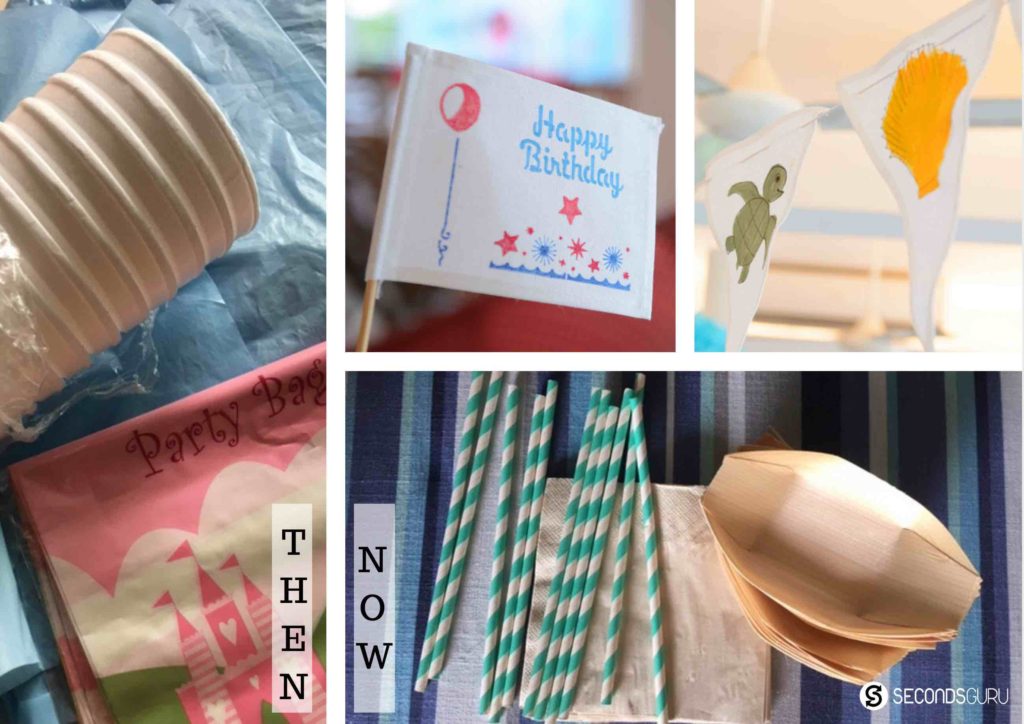
But as I found out, you can cut the temptation. Now I use this handy guide to reduce the waste at my parties – it requires some advance thinking and planning, but minimal sacrifice of convenience.
#3 Releasing helium balloons / sky lanterns
Is it possible that once upon a time I thought it was cute and awe-inspiring to see a balloon rise up in the air, drifting higher and higher and till it turned into nothingness in our sight? Is it conceivable that I let lanterns adrift at the seaside in Bali, my brain wondering only that it was a beautiful sight, and not questioning for a moment where the metal wire and paraphernalia would end up?
Sadly, yes I did. And now I can’t believe how my thoughts never wandered to the “after” of these experiences. Bright balloons in water look like attractive food to sea life, and end up causing pain and death among sea animals. Metal wires do not bio-degrade easily, and if ingested would cause harm too. The thin paper over lantern may biodegrade – but for the time it is floating over sea or washed ashore on land, it is still garbage… There are times we don’t realise we are littering because we are too caught up in the experience of consumption. Fingers crossed, never again.
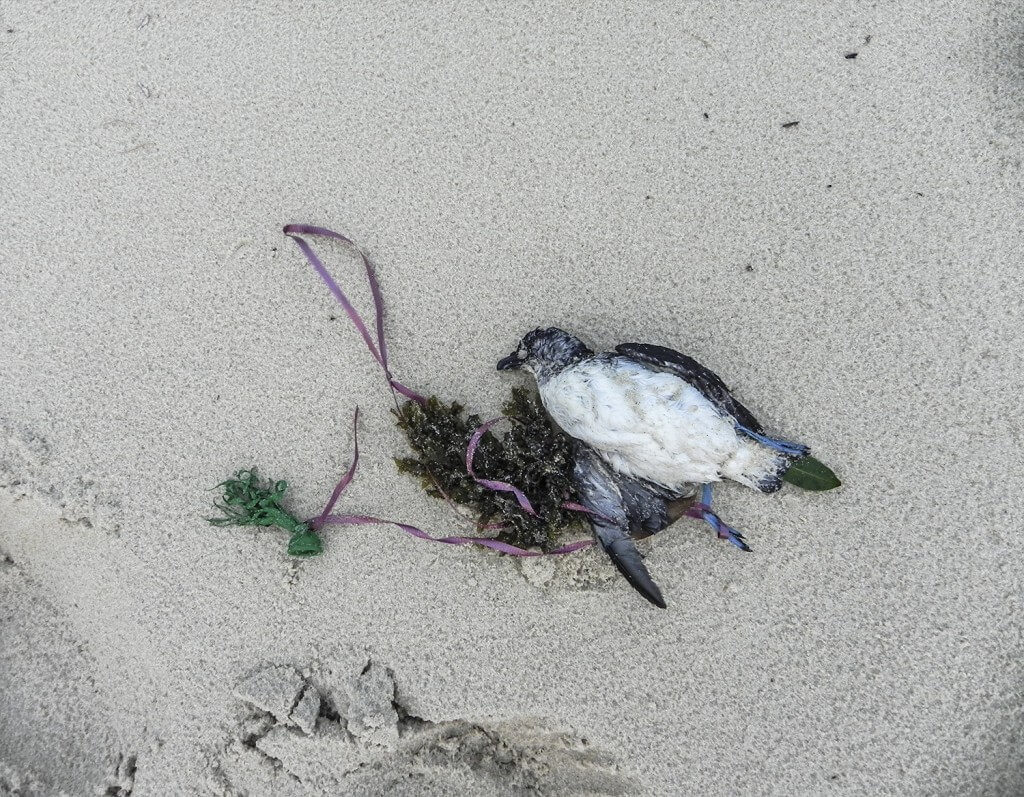
#4 Microbead-filled toiletries
Yes, I’ve been conned by these honey-traps: lured by the perfume of cosmetic stores, where I got dazzled by glittering soaps, and bought into promises that claim I’ll get my youthful skin back. Microbeads – the dust-sized pearls that sparkle in “exfoliating” products – are often touted as an ingenious solution to the dull skin problem and shiny teeth desire. Unfortunately, they create a larger problem than they claim to solve.
Microbeads are minuscule plastic spheres, so tiny that they escape the filtration systems at water treatment plants. As a result, they end up polluting water bodies, attract toxins, and are among the plastic debris polluting the ocean and entering food chains. They’ve even infiltrated tap water in major cities across the world.
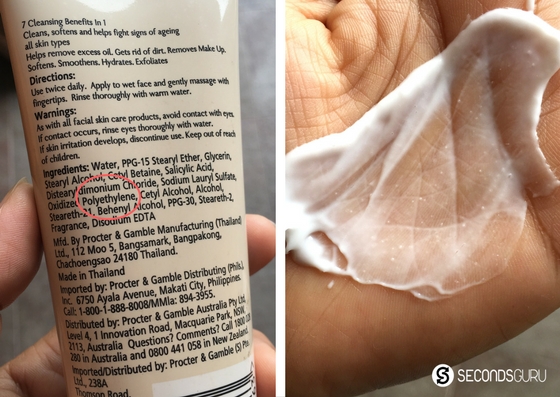
It took me a while, but now I know how to avoid fancy claims and harsh chemicals. Here’s an easy guide to identifying microbeads in your products, and getting things right in your bathroom!
#5 Bargaining with artisans
I grew up in Delhi, and there is a clear, oft-spoken, written and even underlined rule to being a Delhiite – you must bargain. If you can’t negotiate, you lack IQ and/or are a tourist; if you can haggle over prices, you are true blood. I was true blood. I remember going to China when Shanghai was still building skyscrapers and the Bund was yet new and the shopkeepers in the local market had no English and only calculators to speak with foreigners. Even there, I haggled – using all my dumb charades prowess. I was proud of it.
But at some point in the last decade, I realised we negotiate best when negotiating with those without power, and the most powerless are the artisans. When we visit supermarkets, buying big corporation wares, we happily accept fixed prices, even if unreasonable. But when sitting across migrants in local stalls and flea markets, it is easy to pretend disinterest to get a better price, or argue over the skills and craftsmanship to get a deal. I am no longer proud of brow-beating the sellers who travel from their villages to big cities to sell their paintings and paper mache products, clay pots and sewn hangings. Belatedly, I have realised the small margins they operate on and the low wages they live on… An urban upbringing can be very blinding to obvious facts! But now that I work in my own startup, interact with artisans, and even simply, just see more documentaries on the low wages for struggling srtisans – I cannot fathom the fact that I used to fight for measly rupees with craftsmen!
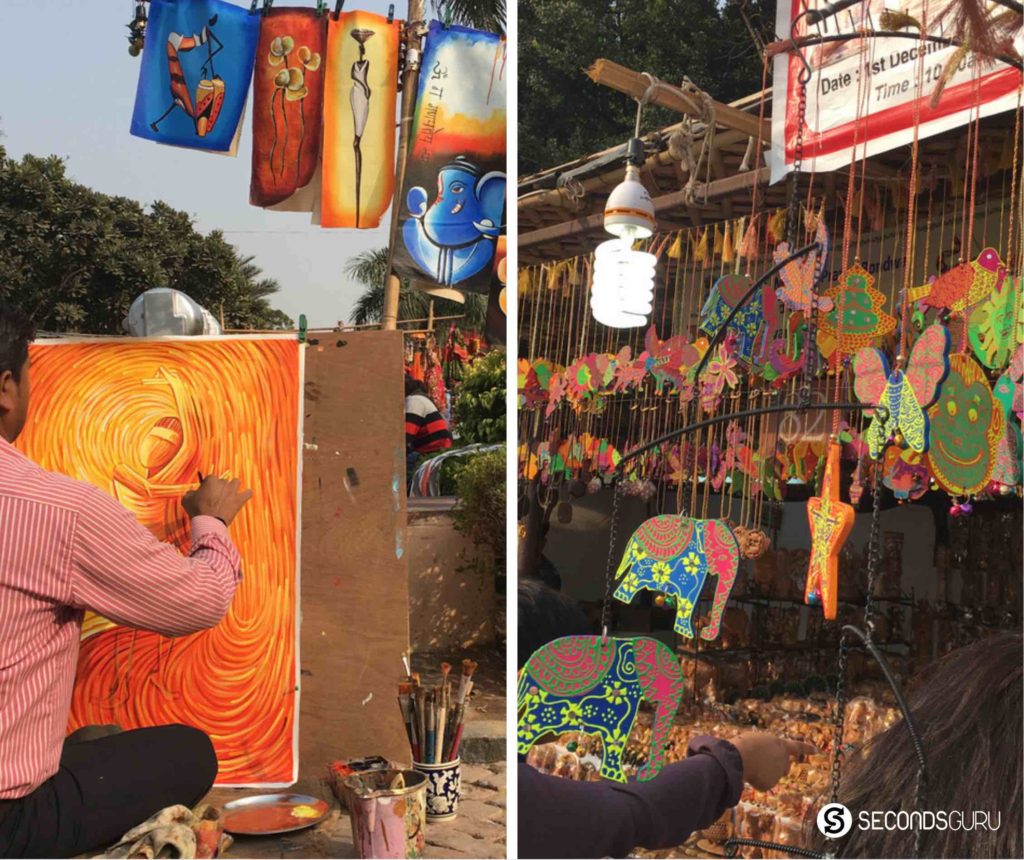
Lara
#6 That high heel I never wore
I still remember walking into a big store at the airport after a tiring intra-day work trip to Singapore when I was based in Hong Kong. I had my Pretty Woman moment that day when the (un)helpful store assistant asked me what I really wanted (Read: Don’t think you can afford this!). Not much later, I walked out with a pair of gorgeous pocket burning high heels. Unfortunately, I did not end up wearing them, ever. They were extremely uncomfortable! After hoarding and hoping I would wear them one day, I hesitatingly donated them to my cousin. The good news is that she loves the pair and somehow manages to wear them.
On my part, I have understood that I am no Julia Roberts and ego is something to be left outside when I walk into a store. Not to mention, I buy only what I need these days. Add to that, I try what I buy, often a few extra tries and long walks around when it comes to pretty looking, ultra high, high heels!
#7 The gorgeous, gorgeous, worn once outfits
It was the much-awaited wedding of my sister-in-law a few years back. I decided to go all out and buy a couple of beautiful outfits for myself and wore them with great aplomb. Each one, only one time though! We have celebrated several anniversaries with her and her hubby ever since, but those clothes are still sitting – dry cleaned and bored- in my closet.
What did I learn? Single wear clothes should not be purchased. Borrow from a friend or rent from platforms such as Style Theory. Promote circular economy while looking fab! For my already purchased items, here’s an open plea, can someone please get married soon and invite me, so I can wear those beauties and calm my ever pricking conscience?

#8 An electronic juicer
Bought in 2009 right after our son was born, this device was meant to fix a lot of problems in our life then- vitamin deficiencies, excess body fat, lack of fruits and vegetables in our daily diet. It was the best thing to have come our way that year. After a lot of research, we purchased a pure fruits juicer over a food processor. Research and purchase done, we used the contraption for exactly 2 weeks. Thereafter, the sheer wastage of the fruit pulp along with studies that said eating the fruit is better than the juice led the device to the back shelf of our kitchen cabinet. It has been there for the last 8 years.
Wish we had deep dived into the merits of needing a fruit juicer rather than just exploring the type of device to buy! Honestly, the first question we ask ourselves now is, “Do we really need this?”. We research what to buy instead of whether buying it is a good idea or not – else we are bound to discover the cons only after making the purchase.
Our list is way longer than the above highlights we’ve shared – and over time we have shed bad habits of buying bottled water, accepting plastic shopping bags, leaving uneaten food in plates at restaurants and more… This article would be too long if we included everything! Now that you have heard our confessions, how about yours? Do you do things differently, now that you are more aware of the environmental impact of your actions? What from your past would you never, ever catch yourself repeating now?
-Team Secondsguru

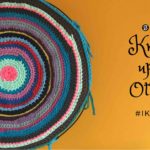

Priyanka Gupta Sarvaiya
21 September 2017Very nice article Anuja and Lara! It had it’s giggly moments as well as eye opening ones especially one time wear wedding clothes or that on the spot shopping decisions which we later regret.. our life is full of random stuff (quite literally!) That knowingly or unknowingly entered our homes but like a mirror forces us to look into our habits and a constant reminder to our pledge towards sustainability!
One thing I would like to add to the list is the helplessness that I feel whenever out for Indian grocery shopping or veggie/fruit shopping in general.. even though we carry our own reusable cloth bags to lug the grocery home, there is still no escaping those rolled plastic sleeves in which they put our stuff and weigh and stick the price tag.. how many times I took the loose veggies and asked them to weigh them separately but use only one plastic bag and how many times I have been refused.. and this seems to be a norm in almost every grocery store in Singapore. Hence, despite knowing I should not be using that there are times when there is no way out!
Anuja Byotra
22 September 2017Thx for following us Priyanka, and so glad our post gave you a pause for thought! “Random stuff” is such a perfect phrase for the regretful buys we accumulate – have a good mind it to steal it for a future headline 🙂 You are spot on about the frustrations of grocery shopping. I tried going clingwrap free in July – and found it nearly impossible to escape buying packaged fruits and veggies unless I gave up the supermarket, or gave up some food items altogether!